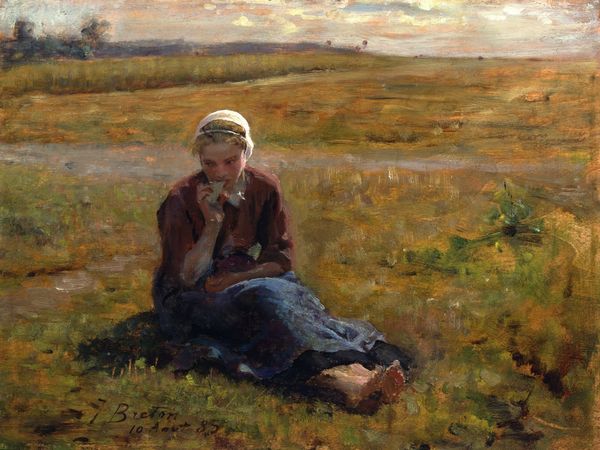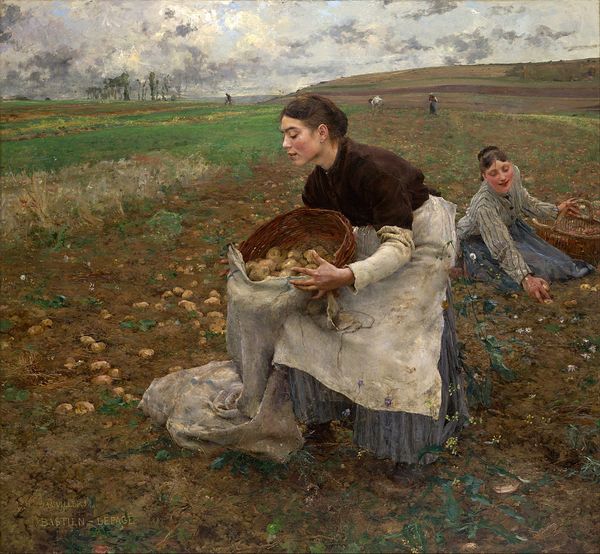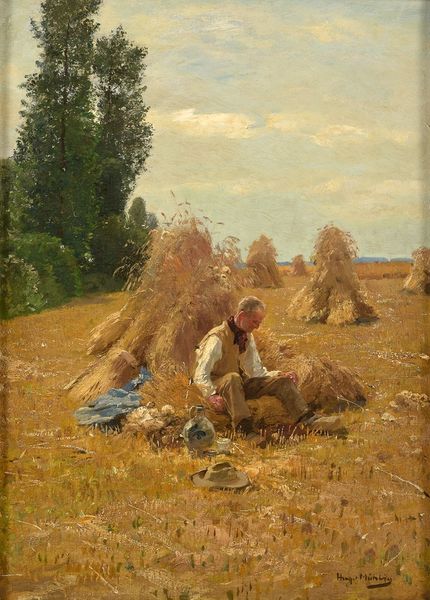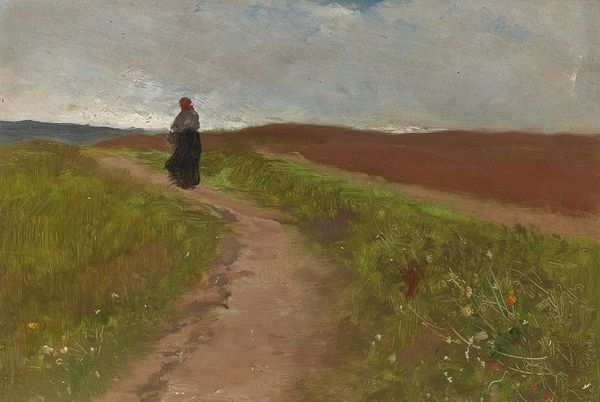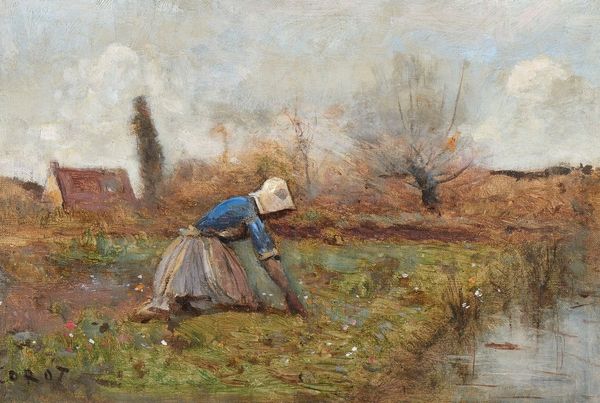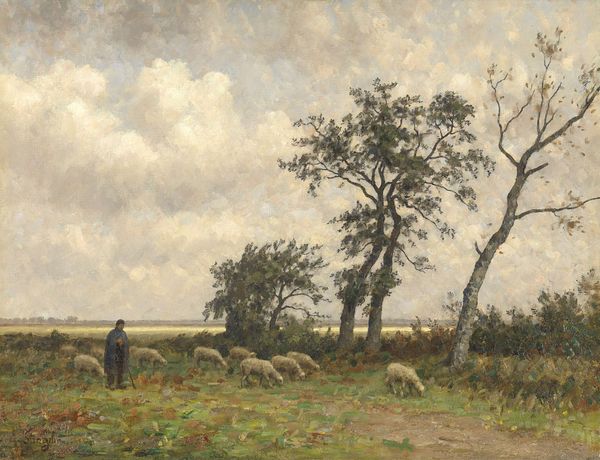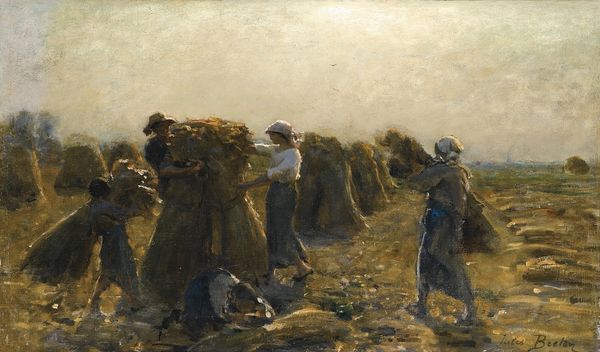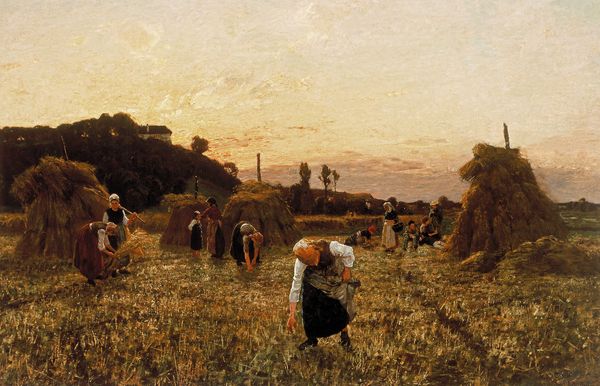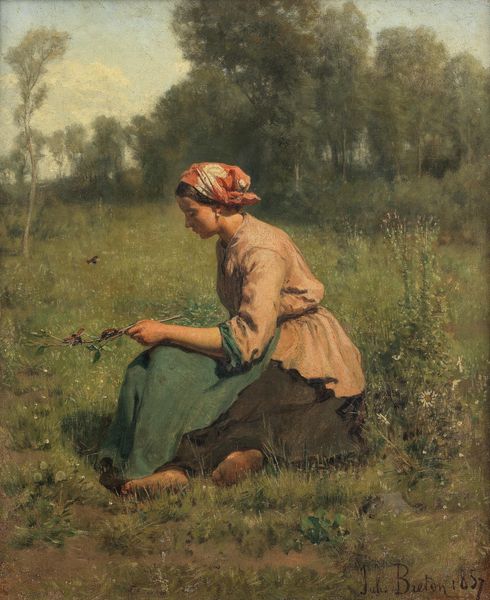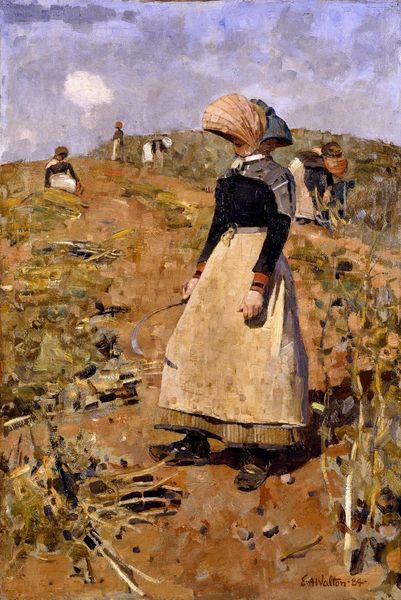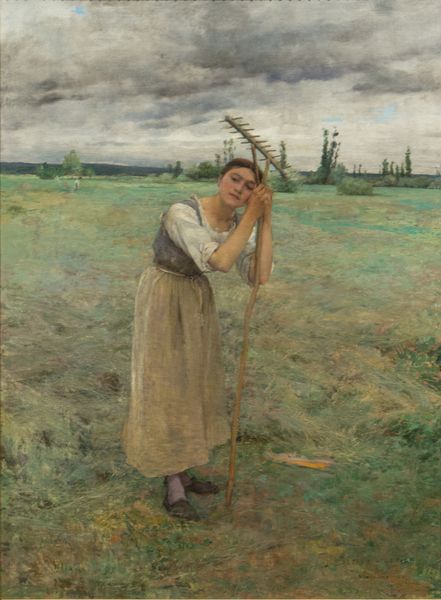
painting, plein-air, oil-paint
#
painting
#
impressionism
#
plein-air
#
oil-paint
#
landscape
#
figuration
#
oil painting
#
genre-painting
#
realism
Copyright: Public domain
Editor: We're looking at "Setting out for the Fields," painted by Jules Breton in 1885. It's an oil painting, portraying a woman resting in a field. There's something so still and contemplative about her pose against that vast landscape. What draws your eye, and how do you interpret this work? Curator: Well, immediately I consider Breton's positioning within the broader art world. He's working in a period where the French Salon still holds considerable power, dictating artistic tastes and acceptable subjects. Works such as "Setting out for the Fields," while appearing straightforward, were part of a larger conversation about the representation of rural life and labor. The public role of art here seems to validate and romanticize the rural existence, subtly influencing how viewers perceive the peasant class. Notice how the scene is picturesque but removes the harsh realities and complexities. What do you think about that? Editor: That’s interesting. It almost feels like a constructed view of reality. The painting isn't a documentary, but rather, as you say, a carefully composed image aimed to be publicly pleasing, leaving me to wonder if its true purpose to create a sort of bucolic fantasy rather than depicting lived experience. Curator: Exactly. Breton's success was, in part, due to his ability to navigate these socio-political currents. The painting functions less as a true depiction and more as an ideological projection of rural life, tailored for urban consumption and patronage. And also remember this was happening when photography was being debated about if it was "art" or not and these Salon artist might have seen them as competition for art as documentation. So in turn paintings doubled down as staged narratives. Editor: This makes me see it with fresh eyes. The painting serves not only as aesthetic enjoyment, but can provide information on social and political contexts of the era in France. I appreciate your insight on the social functions of art. Curator: It is a constant dance between how artist creates, institution projects, and public receives a piece of work. Thank you, it's rewarding to be able to share the social factors involved in this process.
Comments
No comments
Be the first to comment and join the conversation on the ultimate creative platform.
